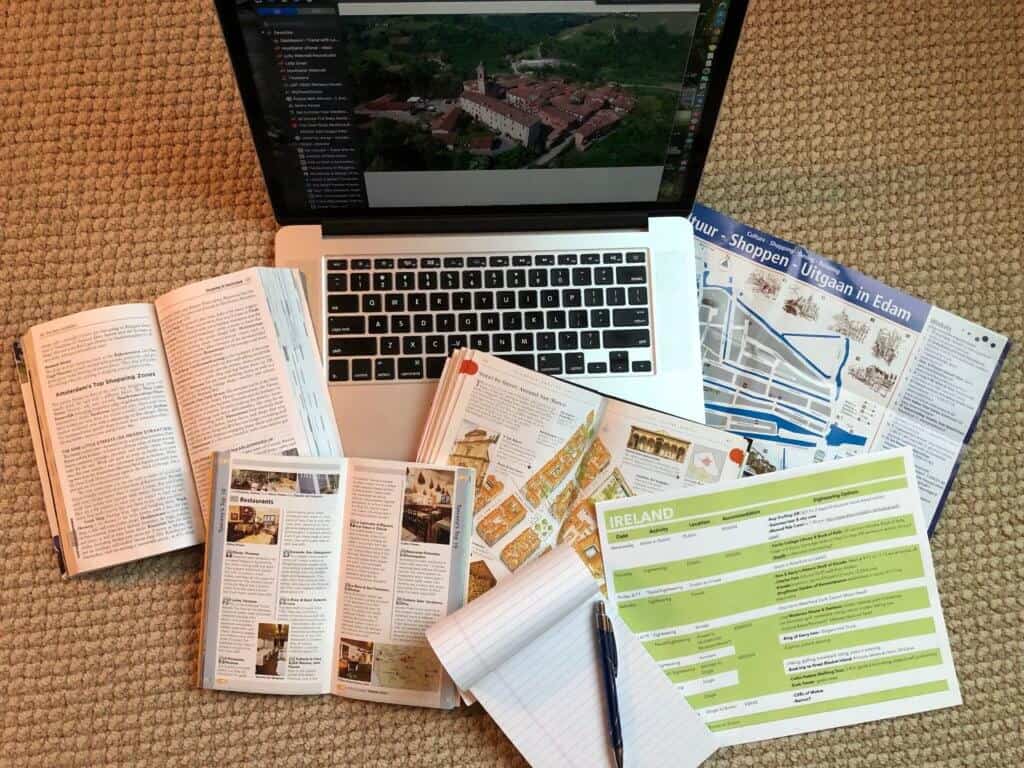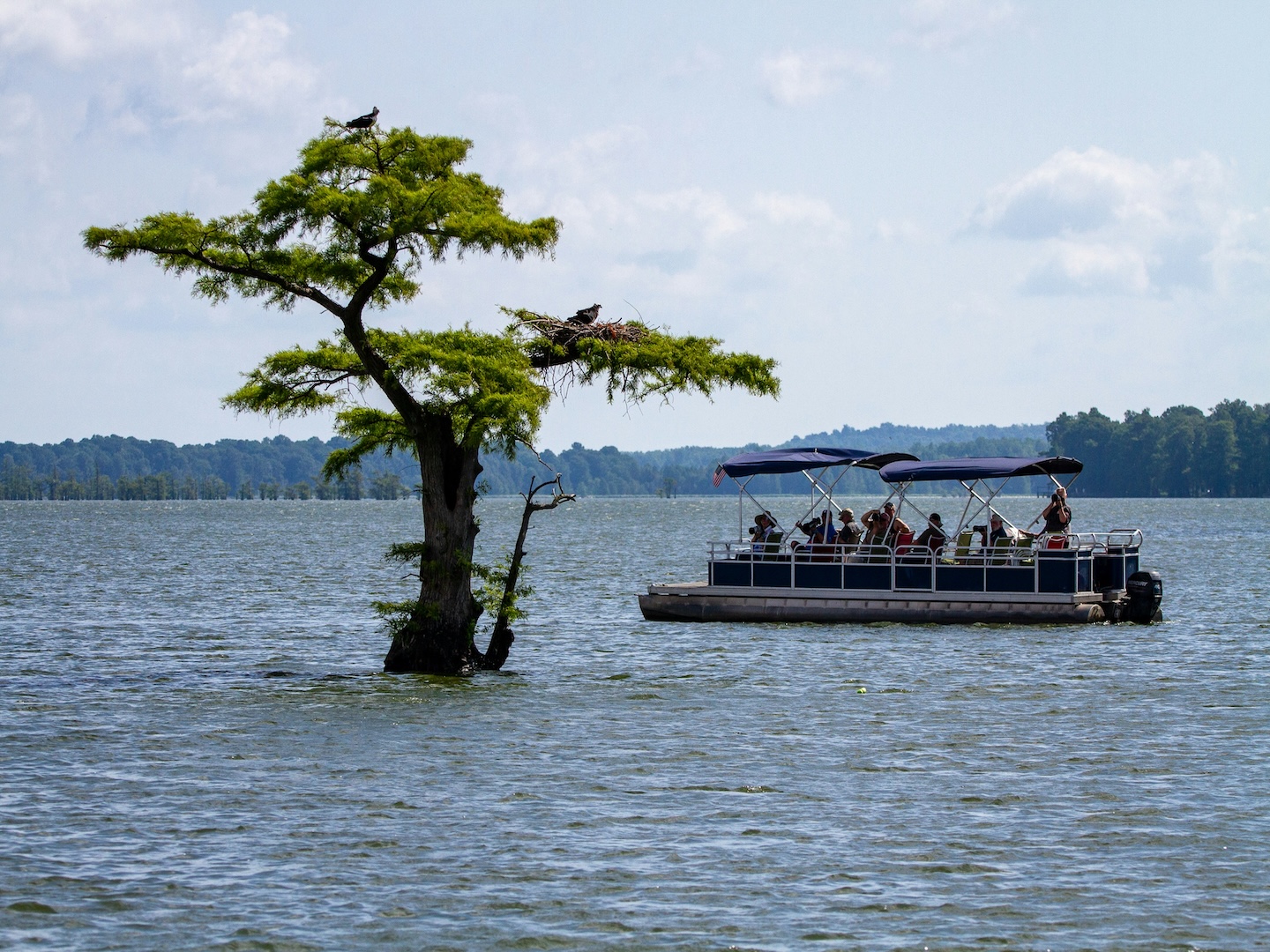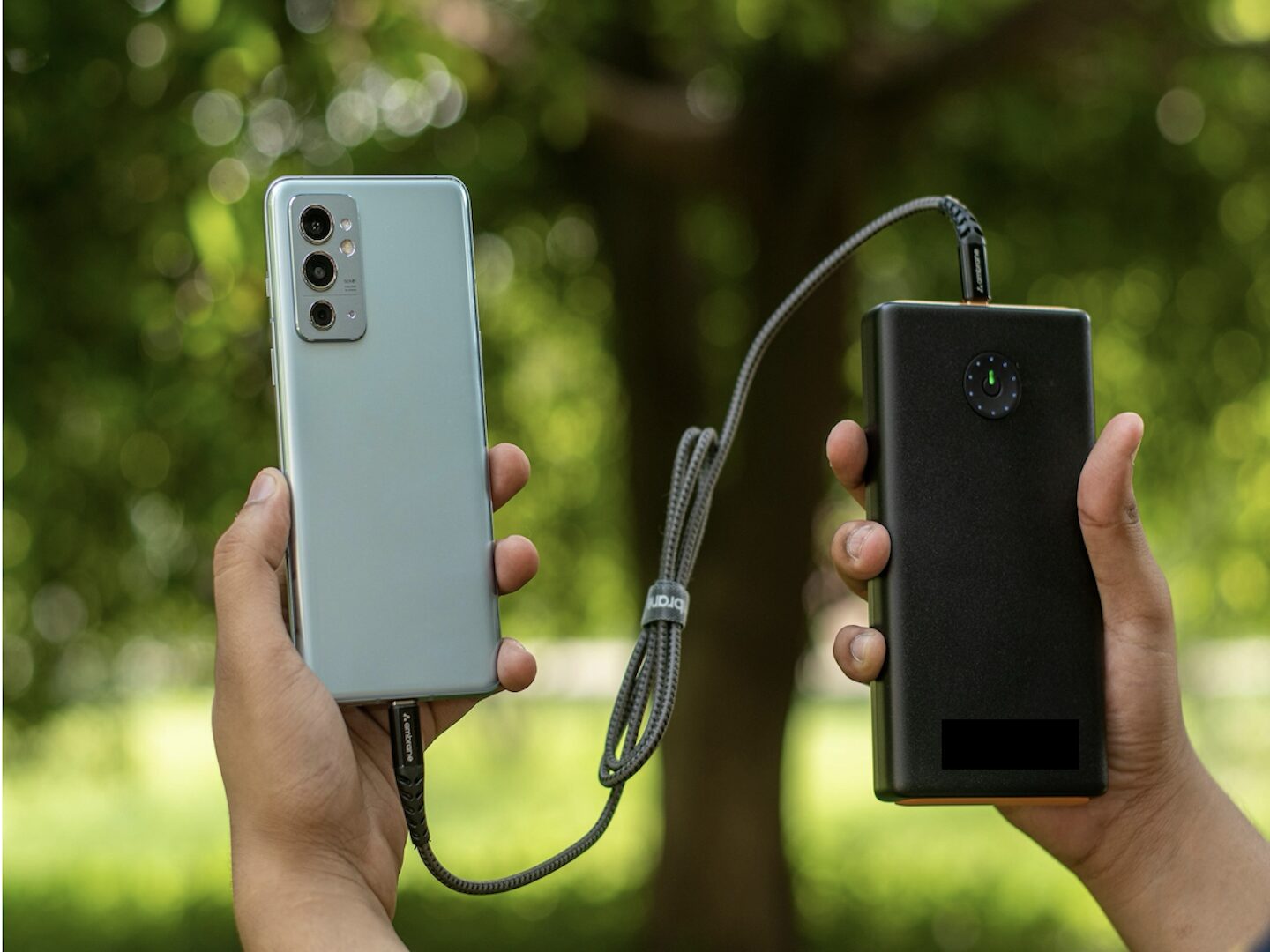Just as trusted friends are so important in life, trusted apps and websites (apps/sites) are critical to travelers. Like friends, the apps/sites are there when you need them. Whether you plan your own trips, are a cruiser, or take escorted/guided trips, everyone needs reliable apps/sites to make travel more enjoyable and comfortable. Traveling with them can alert you to airline flight delays, help you navigate by car or on foot in a new city, keep you safe, entertain you, communicate with people whose primary language is not English, and much more. Here are some of my must-have apps/sites — plus a few extra to consider. (Note that some apps can be classified into more than one category below.)
Tips for Using Travel Apps & Websites
- Many of these listings are for both apps and websites. When that’s the case, I find it helpful to work on the website version (once I’ve established an account) and then access the information on my smartphone while traveling.
- Most of the listed apps are available for Android and Apple smartphones.
- Download desired apps on your smartphone before leaving home.
- Select and download the information you’ll need for apps specific to a region before your trip. For example, download the languages you’ll want translated in Google Translate. Likewise, download the cities you’ll be visiting if using the Rick Steves Europe Audio Tour app and the narrated driving tours you plan to take on the GuideAlong app.
- Create folders of your travel apps on your smartphone so they’re easily accessible.
- Download the music, movies, TV shows, and podcasts you’ll want to listen to on your trip to your device before leaving home.
- Run software updates on all the devices you’ll be taking along to make sure they run efficiently and have the latest security updates.
TRIP PLANNING
1. Ideas and Inspiration
Get the most out of your trip by researching popular things to do, guided tour options, and top restaurants and lodgings at your intended destinations.
Some popular companies offering half-day and full-day guided tours include Context Travel, Get Your Guide, Tours by Locals, and Viator. You can search their sites by destination, specific interests, and dates.
Additionally, TripAdvisor and Yelp are two apps/sites that provide general information and user reviews of places to visit, guided tours of sites, and restaurant and lodging choices. I use these apps to check reviews of places I’m interested in, and that helps me narrow down what I want to see, where I want to stay, and great places to eat.
2. Mail Management (in the U.S.)
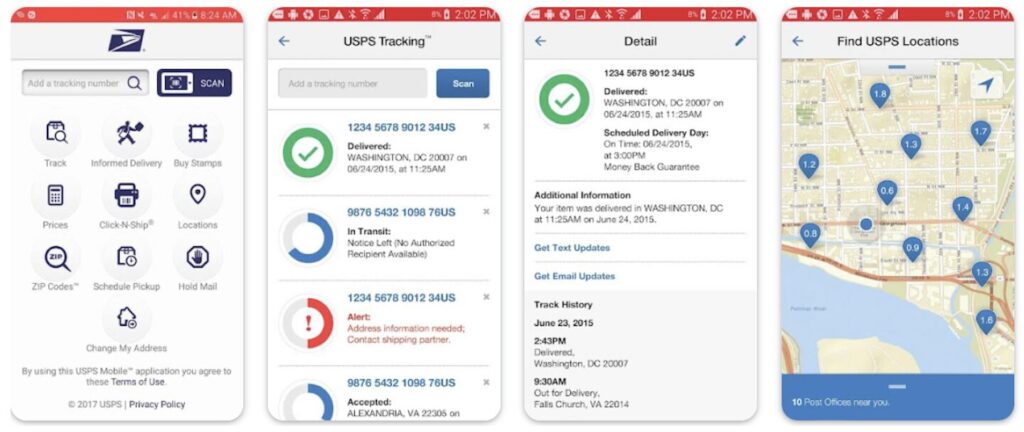
When leaving town, you need to stop your mail (unless you have someone picking it up for you). In the United States, the U.S. Postal Service (USPS) has a handy app to help you manage your mail. The app also allows you to view images of the mail delivered daily using the Informed Delivery option. Look for USPS Mobile in the app store.
3. Maps
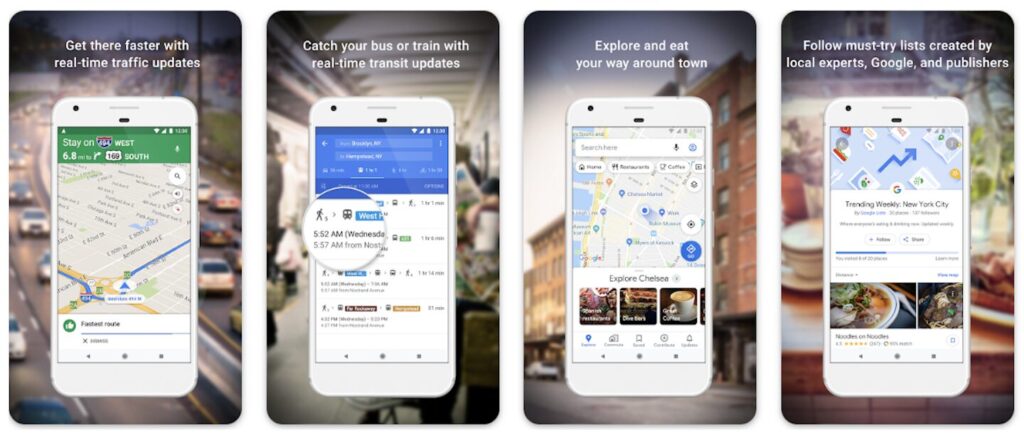
Use Google Maps to get the lay of the land—wherever you happen to be heading. Check traffic and transit updates. You can also use filters to discover lodging, restaurants, things to do, museums, pharmacies, ATMs, and more. In addition to displaying specific places on a map, Google Maps can show user ratings/reviews, opening hours, and contact information for the various sites.
4. Road Trip Planning
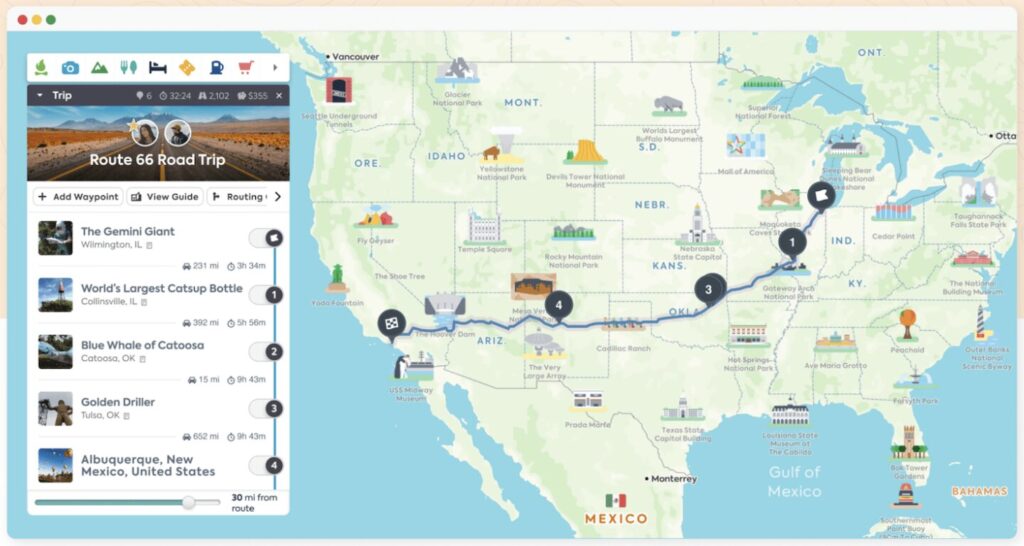
The Roadtrippers app/site helps you plan your road trip. It provides driving time between scheduled stops, mileages, approximate cost of gas as well as some curated trip plans to inspire your travels. In addition, it has filters you can select to add other stops that you may not have considered at first. For example, you can search for restaurants, entertainment venues, landmarks, campsites, and the like. The more filters you select, the more specific your results will be – such as independently-owned restaurants with 4-star ratings or above. If planning to travel by vehicle, check out these helpful tips for planning perfect road trips.
5. Safety – Smart Traveler App
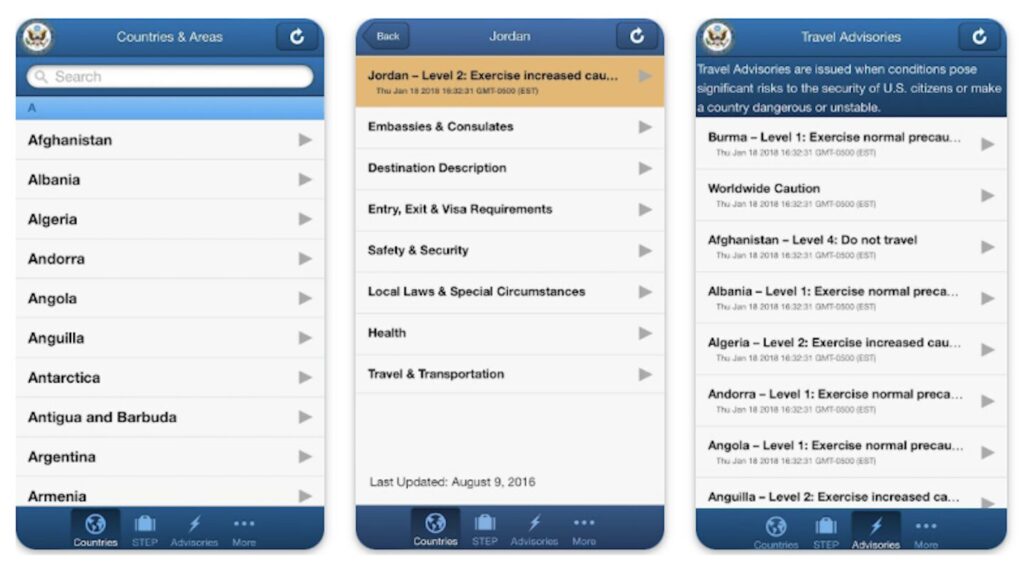
STEP (Smart Traveler Enrollment Program) is the official U.S. Department of State app for travelers, and Smart Traveler is its name. It offers information on other countries, travel alerts and warnings, maps, and U.S. embassy and consulate locations worldwide. By enrolling in this free program, you can receive alerts from a U.S. embassy or consulate about safety concerns where you’ll be visiting and help the embassy contact you in the event of an emergency. Plus, the program can help family and friends get in touch with you in an emergency.
Before I travel internationally, I enter my travel dates and destinations in the app, so I’m all set. Once, while in Greece, I received alerts about demonstrations or protests in nearby neighborhoods. I find it comforting to get a heads-up on potential trouble spots to mitigate any possible safety issues.
6. Travel Guides
Many companies that offer print travel guides—like Fodor’s, Frommer’s, Lonely Planet, and Rick Steves—provide travel destination guides online. The online resources are not as detailed as the print guides (available at most public libraries), but they offer a good starting point for planning your getaways.
7. Travel Planning Apps
Everyone has their own way of planning their travels, and thankfully, there are several options available. Choose which suits you the best.
– Document Management Apps
Create and save travel itineraries and related information on Google Drive using Google Docs and/or Google Sheets (spreadsheet). Then, use the Google Drive app on a smartphone to access your information while on the go. Before leaving home, go to the document/itinerary you want, tap the ellipsis (3 small dots) in the top right corner, and select “Make available offline.” Then, you can access the document when you don’t have WiFi or cell service. This eliminates the need to pack paper itineraries. Similar document management options exist, such as Dropbox and Microsoft’s OneDrive.
– TripIt
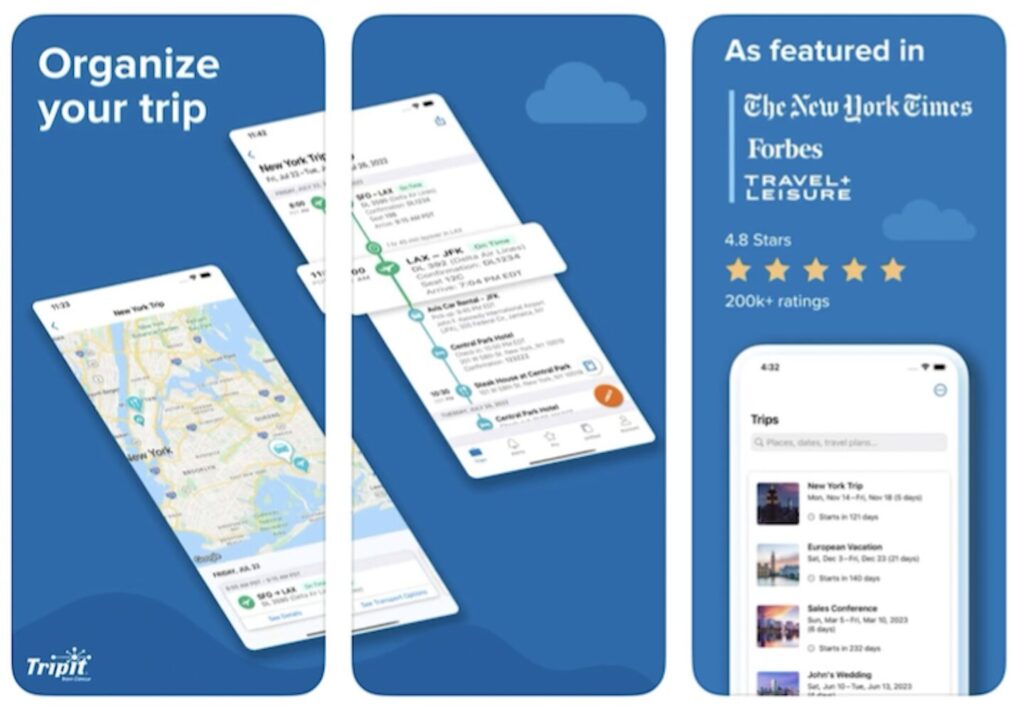
TripIt allows you to create a detailed itinerary that incorporates information from flight, hotel, and rental car confirmation emails. It also provides safety scores on different neighborhoods, shows you what’s near your hotel, and lets you share your plans with others. The pro version adds real-time information on your flights (like terminal guides and flight boarding times).
– Troupe
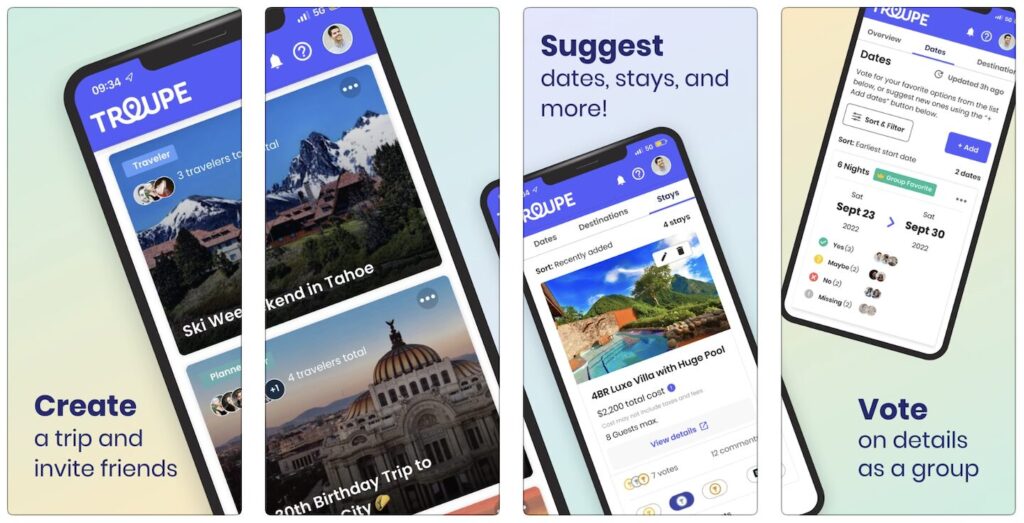
Troupe is a travel planning app designed to help create and manage a trip with others. Everyone in your group can add and share ideas of where to go, what to see, and where to stay. You can poll others on their interests and send announcements – like when an excursion or hotel is booked – to everyone traveling with you. Goodbye, long email conversation threads. Hello, to an efficient way to make travel planning with others more streamlined.
– Wanderlog
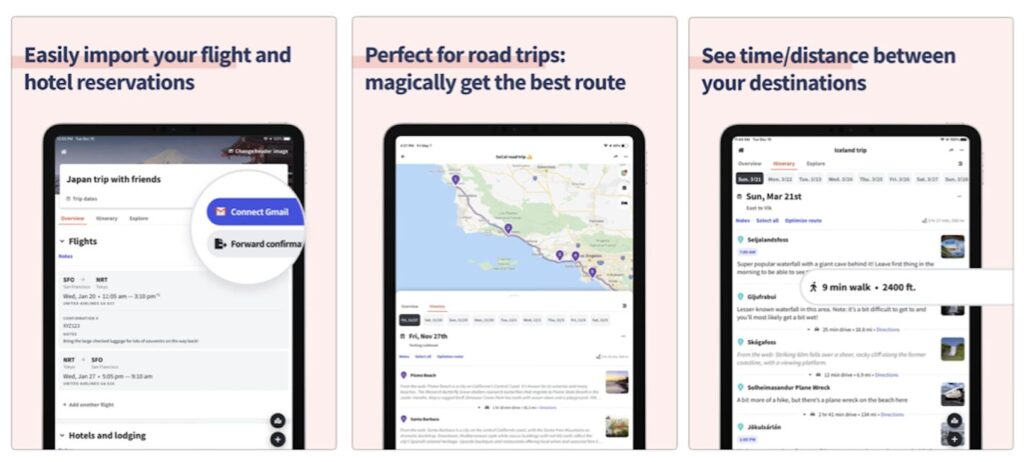
Like TripIt, Wanderlog allows you to build a detailed itinerary using information from confirmation emails and places you want to visit. Get ideas from Wanderlog’s destination guides and add sites to your trip plan. Wanderlog has options for tracking expenses, quickly building daily itineraries based on time and distance efficiency, creating checklists (for to-dos or packing, for example), creating maps, collaborating with others, and managing and – even splitting – expenses. Some options, like offline access, optimizing routes, and adding unlimited attachments, are available with a paid annual subscription. This app is easy to use and quickly allows you to customize what you want to see and do.
8. UNESCO World Heritage Sites
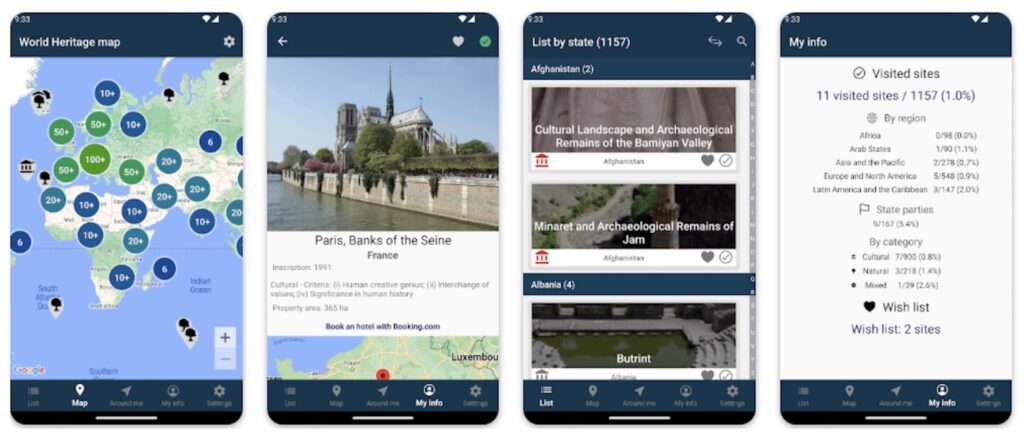
UNESCO World Heritage Sites lists places or regions considered to have major cultural, historical, scientific, or other importance. Many travelers value their travels to these locations.
9. Vacation Home Rentals
An alternative to hotels is staying at an apartment, home, or cabin in your intended location. Use Airbnb or VRBO to discover all your options for a short-term rental property. With a vacation home rental, you typically have more space, a kitchen, and, often, laundry facilities (a massive plus while traveling) – all of which can make your time more relaxing than a hotel stay. Read my article How to Find the Perfect Vacation Home Rental for details on finding the ideal spot for you and your travel partners.
10. Weather apps
Stay in the know before your trip (while planning what clothes to pack) and while traveling with updated weather forecasts. Popular weather apps are AccuWeather and The Weather Channel. Though the weather might not always be perfect, knowing what to expect can help you plan and make the most of your days.
TRANSPORTATION
Choose the apps and websites that match your modes of travel.
1. Cars
– Gas Buddy
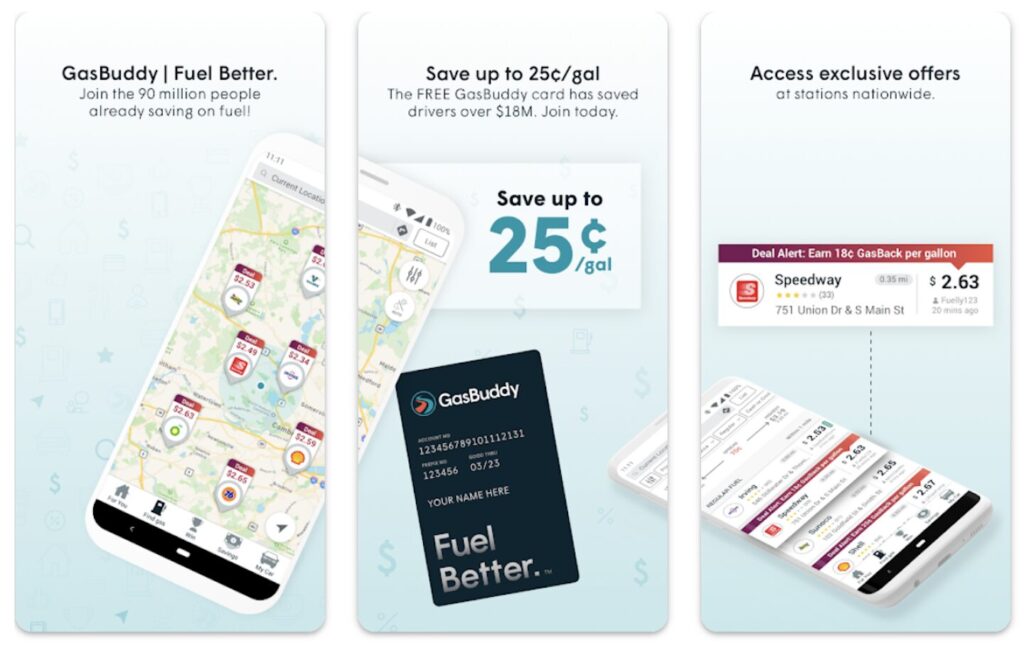
Gas Buddy allows you to quickly locate gas stations in the U.S. and Canada with the best prices. The Trip Cost Calculator tool will enable you to calculate fuel costs for driving.
– GuideAlong (previously GyPSy Guide)
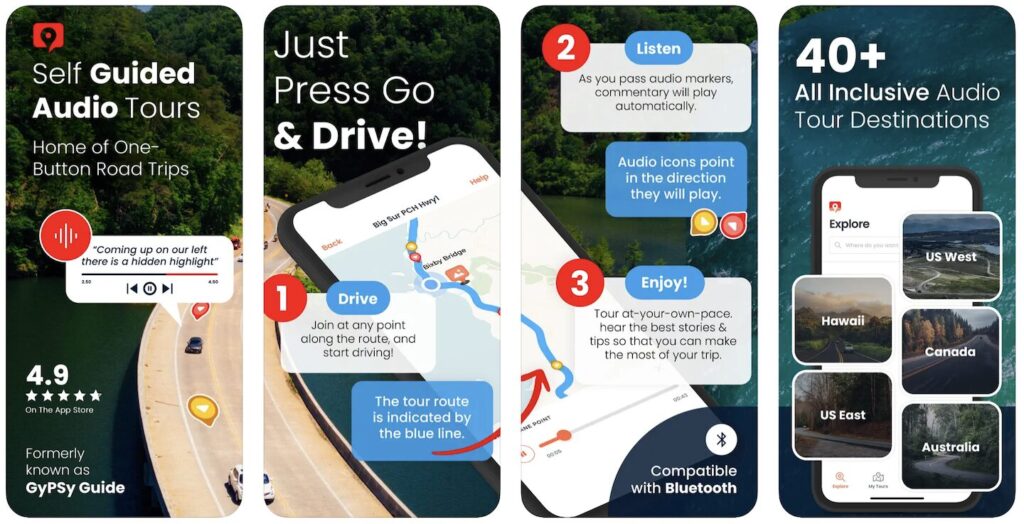
GuideAlong (formerly GyPSy Guide) is a novel audio tour app that provides narrated tours while driving in Australia, Canada, and the U.S. — mostly in national parks. Since it’s GPS-driven, the narration begins as you approach a scenic and/or historical spot. There’s no need for WiFi or even cell service. The app is free to download; you decide what tours you want to purchase. Since the app can drain your smartphone’s battery, consider using a car charger (not a USB charger) while enjoying the audio tour. My husband and I were so thankful to have this along on our drive through the majestic Canadian Rockies; it made the journey so much more enriching.
– Navigation apps
Apple Maps, Google Maps, and Waze can all lead you to where you’re going. Apple Maps and Google Maps offer navigation by car, foot, bicycling, and public transportation. Waze is focused on driving. All the apps have real-time traffic information, so they know about delays due to accidents, road closures, and the like. In addition, they suggest alternate routes or detours if their information suggests delays. I’ve found that Waze seems to be the most proactive of the three in rerouting if there’s an accident on the road ahead.
– Rental car apps
Use the app/site of your favored car rental company to plan and manage your car rental.
– SpotHero
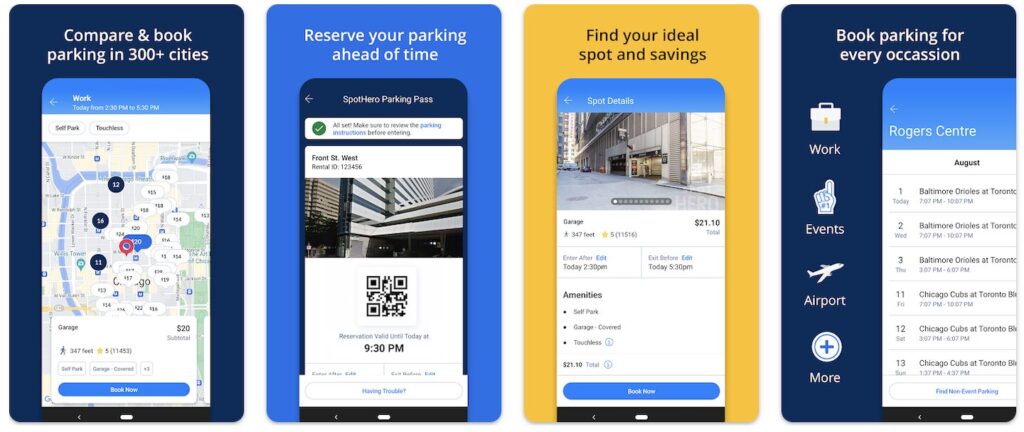
SpotHero helps you find parking garages or lots near where you plan to visit. Enter your expected arrival and departure time, and the app will offer options close to your destination. You’ll learn the expected price, and you can filter by type of garage (e.g., covered, self-park, or on-site staff). SpotHero also shows how far a walk is from the parking area to your destination. User ratings can help you decide which parking option is best for you.
2. Planes
– Airline App
Use the app for the airline you’ll be flying on to keep updated on your flight status, boarding times, in-flight entertainment options, and more.
– FlightAware
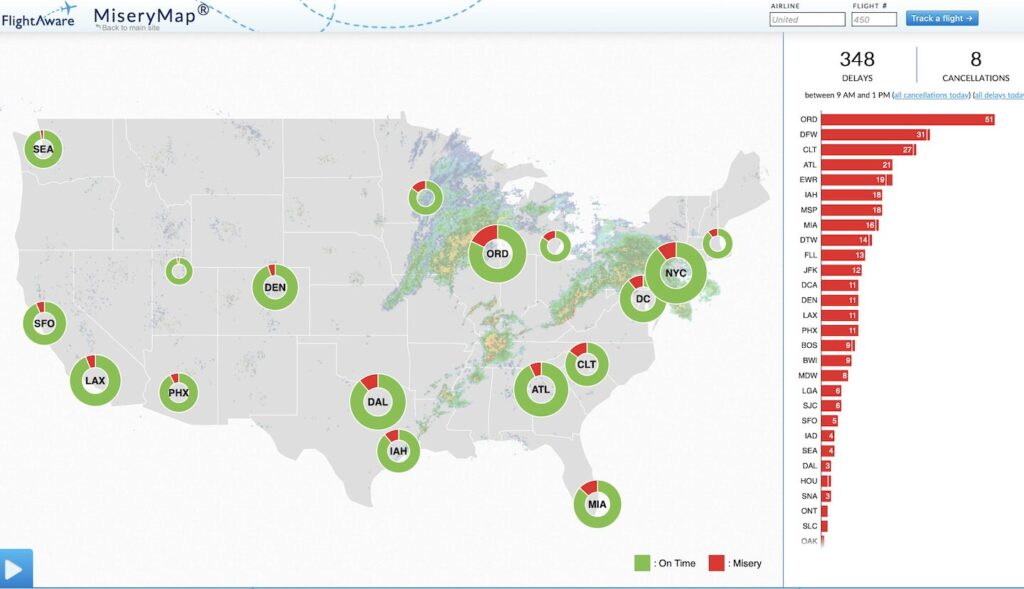
The FlightAware app lets you learn about airport delays and cancellations and watch flight tracking maps. Their Misery Map (above) shows what delays are occurring at each U.S. airport.
– LoungeBuddy
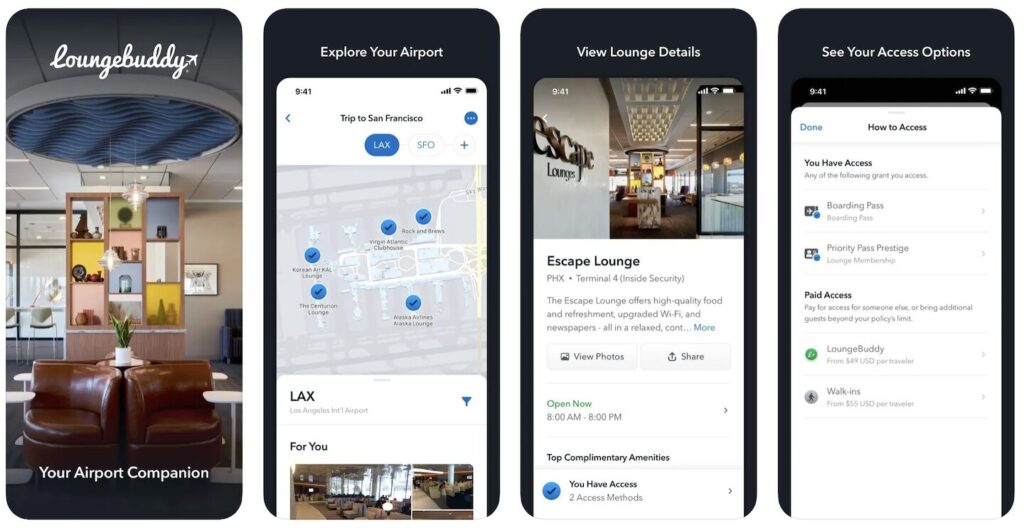
LoungeBuddy puts the locations and features of airport lounges at your fingertips. You can also purchase access to a lounge if you don’t already have one.
– MyTSA
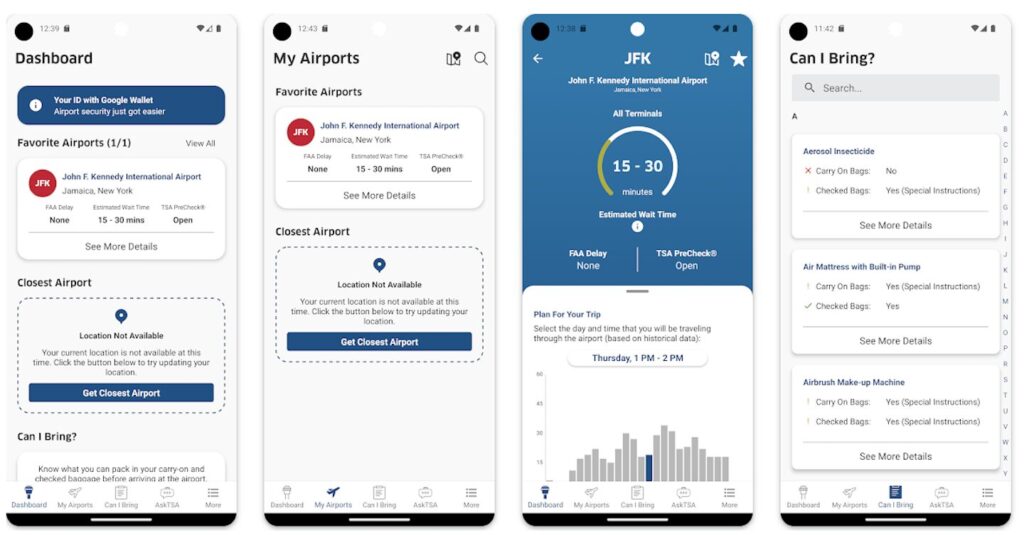
MyTSA helps you learn what you can take through U.S. airport security checkpoints, check how busy an airport may be on the date and time of your intended travel, post your wait time for other travelers, and check delays and current weather conditions at U.S. airports.
– SeatGuru
The SeatGuru website helps you choose the most favorable airline seats. Enter the airline name and flight number to get information on the types of seats available. For each seat type, you’ll learn the pitch dimension (the length of a point on one seat to the same point on a seat in front or back of it), the seat width, and if the seat reclines. In addition, SeatGuru provides recommended seat locations on the plane and baggage allowances.
– Turbli
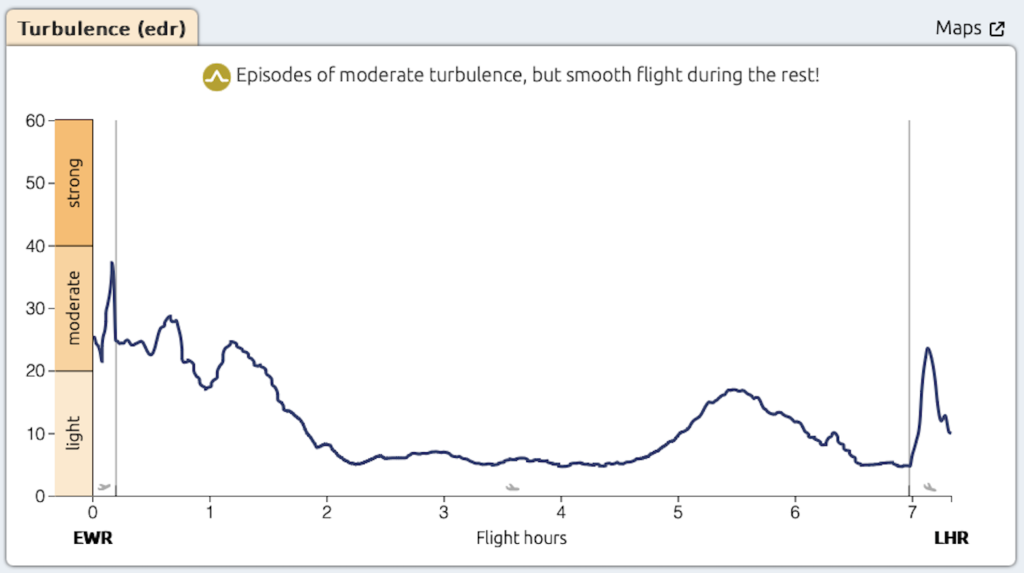
The Turbli website supplies information on expected air turbulence on flights in Europe and North America. Using data from weather services, Turbli displays the expected turbulence, wind speeds, and thunderstorms on the route. Check Turbli about six hours before the flight for the most accurate data. On a recent flight, I took a screenshot of the turbulence graph from the site to use on my smartphone, viewed it during the flight, and found it quite accurate. Shown above is a turbulence graph for a flight from Newark to London.
3. Trains
Once you’ve identified a train operator for the country you’re visiting, use the company’s app to book your ride and to serve as your boarding pass/ticket.
4. Walking
– Navigation apps
Apple Maps and Google Maps give detailed directions for walking from place to place.
– Rick Steves Europe Audio Tours
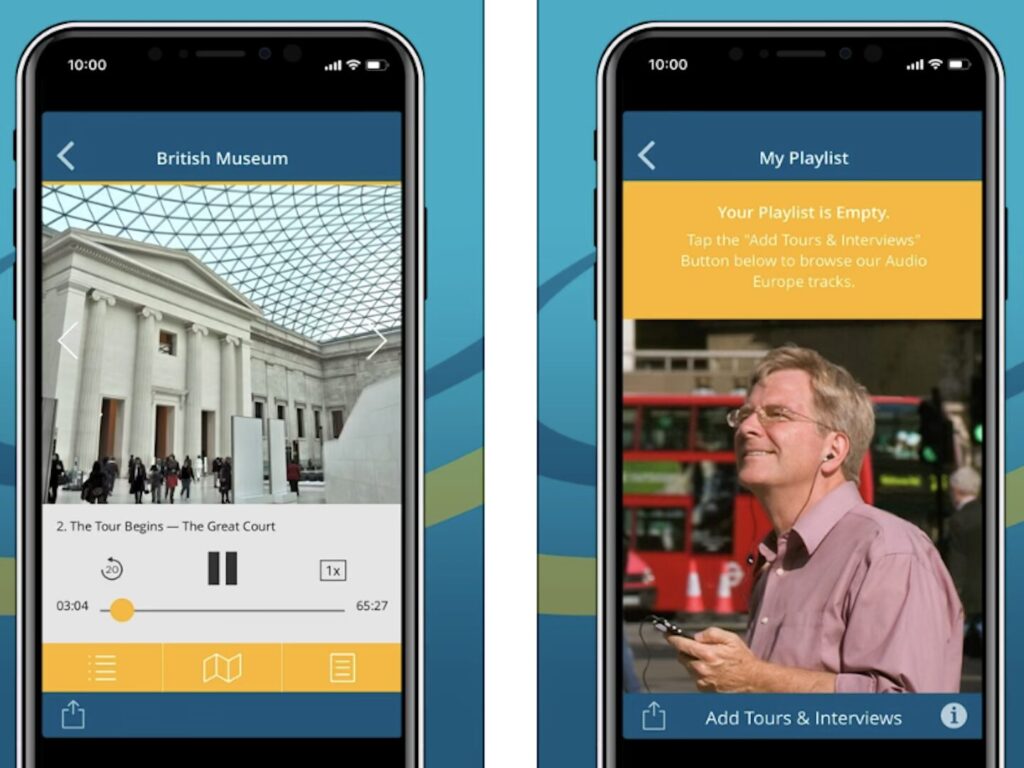
Rick Steves Europe Audio Tours helps DIY travelers learn about a city on foot. (No actual tour guide required.) Download the app and then the specific city tours you’re interested in. You can view a map of the route and images of the sites on your smartphone (to make sure you’re looking at the exact spot Rick Steves references!). If traveling with others, suggest that everyone downloads the app so that the entire group can listen to it on their phones (with their own earbuds or headphones).
WHILE TRAVELING
1. Communication
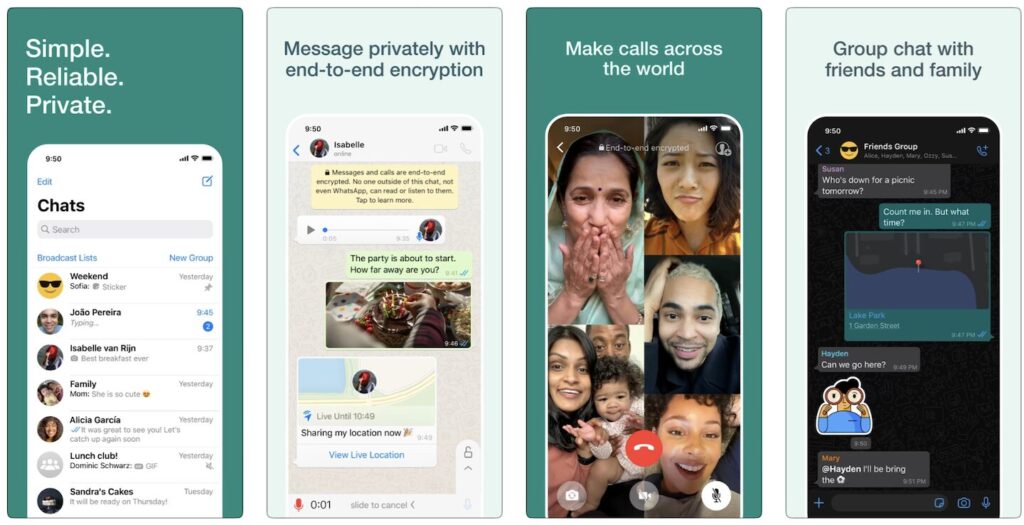
You most likely have a favored way of keeping in touch with family and friends while away. But if you’re traveling to Europe, know that WhatsApp is widely used there. It’s a free messaging and calling app that comes in handy for communicating with European restaurants, vacation home rental hosts, drivers, and more. You can also use WhatsApp to communicate with friends and family (who have already downloaded the app) back home.
2. Currency Conversion
Covertr+ and XE are popular apps that help you convert foreign currency to your local currency. Having this type of app is handy when purchasing goods and services in another country because you can accurately relate a price to your home currency.
3. Dining
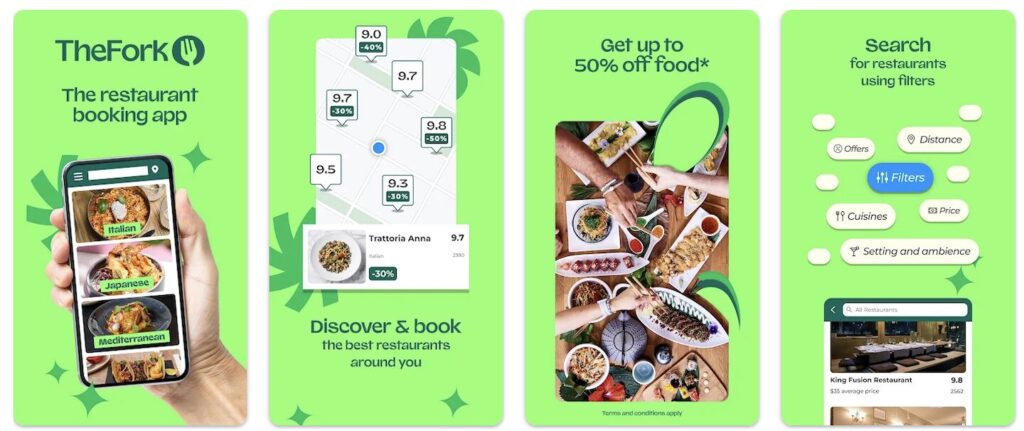
Open Table and Resy are the go-to apps for finding and making dining reservations in the U.S. and Canada. TheFork (above) is Europe’s most popular dining reservation app. All of these apps offer information on restaurants along with user reviews.
4. Entertainment
READING: There are vast libraries of books and magazines that you can access electronically for content while traveling. An Audible subscription allows you to listen to books in your downtime. If you’d rather read than listen, download books on your Amazon Kindle app. Also, check with your local libraries; many apps (like Libby or Cloud Library) allow those with a library card to borrow books and magazines to read or listen to electronically. Nowadays, there’s no need to carry books or magazines along when you travel.
LISTENING: Popular apps for listening to music and podcasts include Pandora and Spotify.
WATCHING: Streaming apps (e.g., Hulu, MAX, Netflix, Prime Video). Before your journey, download the shows and movies you want to watch while away.
NIGHTTIME STAR GAZING: Use your smartphone to learn what’s happening in the great beyond, wherever you are. Two apps for casual night sky viewing are Star Walk 2 (for Apple and Android) and Night Sky 11 (for Apple). A screenshot of the Star Walk 2 app is shown below.
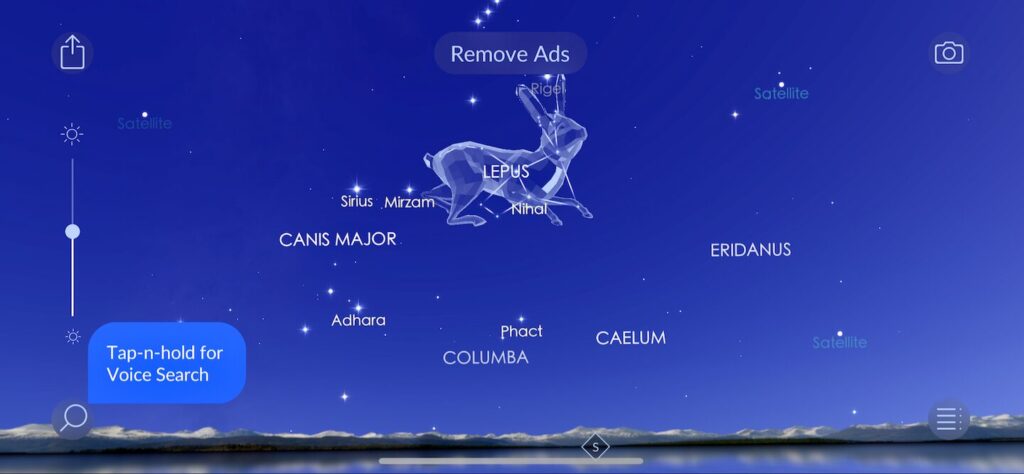
There are more advanced stargazing apps, but these two offer free versions and are great for checking out the planets, constellations, and sometimes even satellites. Allow notifications to be alerted to meteor showers or other astronomical events.
5. Finding Public Bathrooms
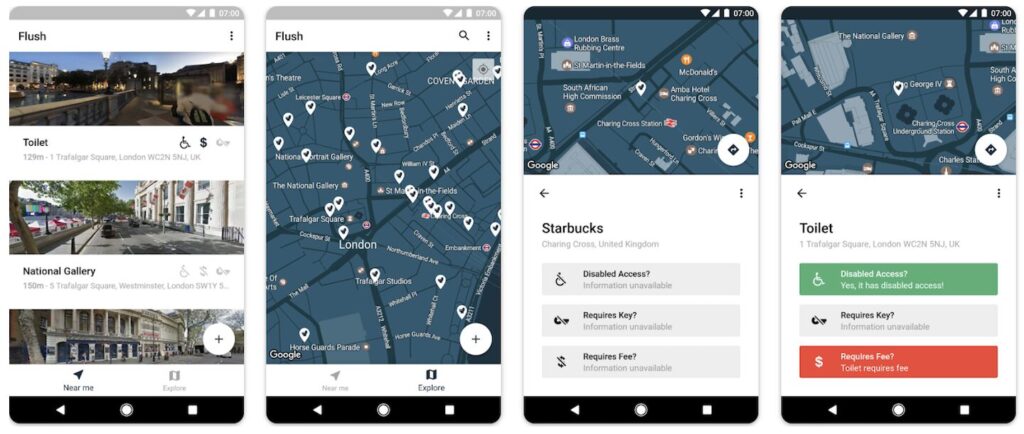
Flush Toilet Finder provides an easy way to find a public restroom worldwide. The app lets you know which ones have a fee or disabled access. (Although this app can be helpful, you can also plan your restroom visits for when you’re at museums, restaurants for meals, or a café for some coffee, tea, or wine. Sometimes those restrooms are cleaner than general public bathrooms.)
6. Getting a Ride Around Town
Schedule a ride with Uber or Lyft (even days in advance), choose your comfort level (size of vehicle), and you’re set. The apps charge you for the rides (via credit or debit cards, Paypal, Venmo, and more), so you don’t have to worry about paying the drivers personally. You tip your driver through the app, too. After you request a ride, the app will provide information, including the driver’s name, the vehicle’s license plate number, and how far away the vehicle is – all vital information, whether you’re planning a ride from the airport to your hotel or a ride in town.
7. Hiking/Walking Trails
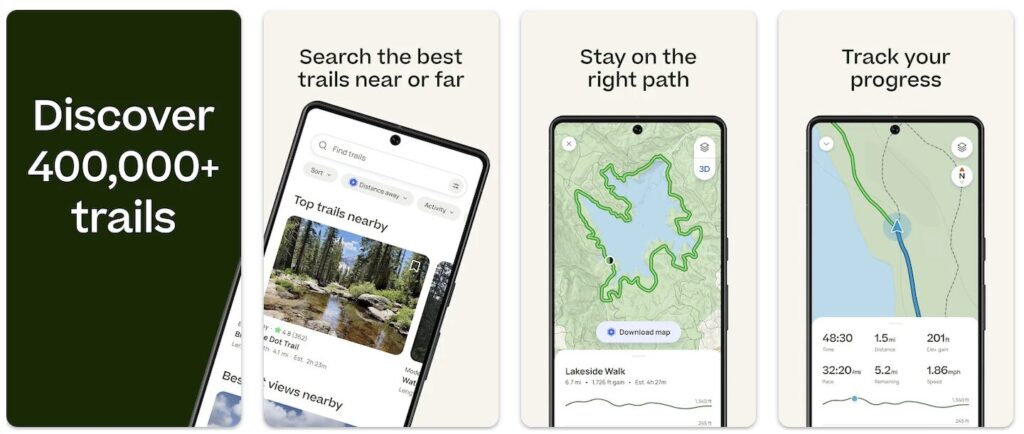
AllTrails helps you find trails, access maps, and read reviews of others who have been on the trails before. You can filter by trail length, difficulty level, views, and user ratings. There are options to save trails you want to explore. Before my trips, I use AllTrails to find trails of interest near my destination; I also use the app while hiking to make sure I stay on my intended trail.
8. Keeping Track of Travel Buddies and Luggage
Use the Find My app (Apple) to keep track of others in your traveling party, your devices, and your items (using Apple AirTags). Note that others need to approve sharing their location so you can see where they are. My husband and I have found the app helpful if he and I split up for a few hours while traveling (one of us might be shopping, the other might be heading to a museum) because we’re able to figure out exactly where the other one is – peace of mind when we’re in a new city that we’re not too familiar with. The app provides directions to the other person, too, so we can easily find each other. The Android version is Find My Device, which helps locate Android devices (if location settings have been turned on).
9. Language Translation
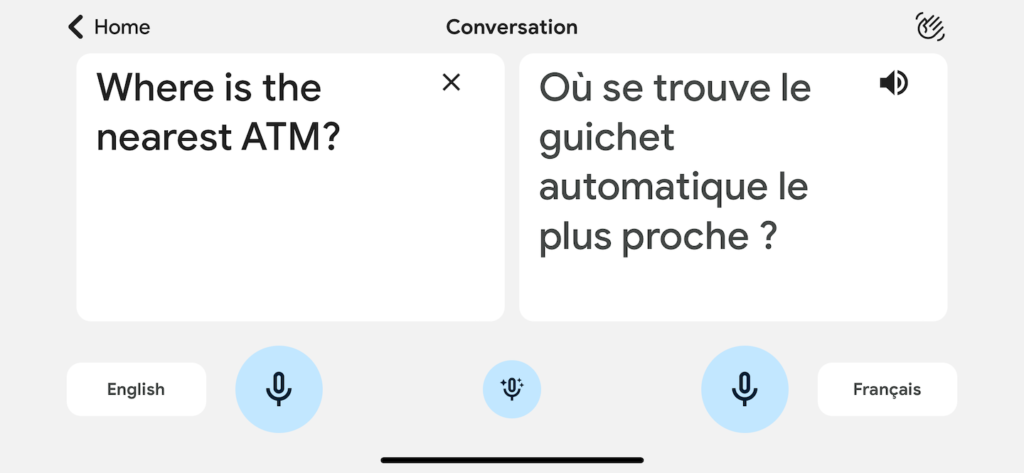
Google Translate is a great resource when traveling to places where English is not commonly spoken. I’ve used this with success to talk to locals who don’t speak English in small European towns. You can enter a word or phrase you need in English, select a language you want to translate to, and that’s it. The translated word or phrase instantly appears with audio, so you can pronounce it correctly or have the other person listen to the translation. Another helpful feature is that you can scan a sign or menu using your camera, and Google Translate will give you the English translation. This feature was beneficial when visiting some charming châteaux in southwestern France where the information signs were written only in French. Download the languages you’ll need to use the app before your trip to have ready offline access. To learn how to use the app, read my article, Google Translate App: What You Need to Know.
10. Sharing Expenses
Splitwise helps your traveling group track shared expenses, view updated balances, and know who owes whom and what amount. It makes settling up after a trip a breeze—there’s also an option for an online money transfer.
Related Articles
- Expert Tips for Traveling to Europe
- How to Plan a Great Trip
- Rental Cars: Tips for Driving in Europe
- Rental Cars: Tips for Driving in Greece
- Renting a Car in Europe
- Travel Planning Timeline
- Vacation Home Rentals: How to Find the Best for You
- Viking Cruises: Best Action Steps After Booking
Final Thoughts
I can’t imagine going on a trip without travel-related apps loaded on my smartphone. To help me organize the plethora of apps that I frequently use, I have them divided into folders on my smartphone:
- ENTERTAINMENT (Kindle plus music and video streaming services);
- GAMES (games to while away short amounts of idle time while traveling);
- MAPS (Apple Maps, Google Maps, and Waze);
- TRAVEL (Find My, Google Translate, SpotHero, TheFork, Tripadvisor, Wanderlog, and more);
- TRANSPORTATION (airline apps, FlightAware, Lounge Buddy, MyTSA, Uber, car rental apps, and more); and
- WEATHER (Accuweather, The Weather Channel).
Comments?
Feel free to share your favorite travel apps and/or websites that might help fellow travelers. Thank you! 🙂

